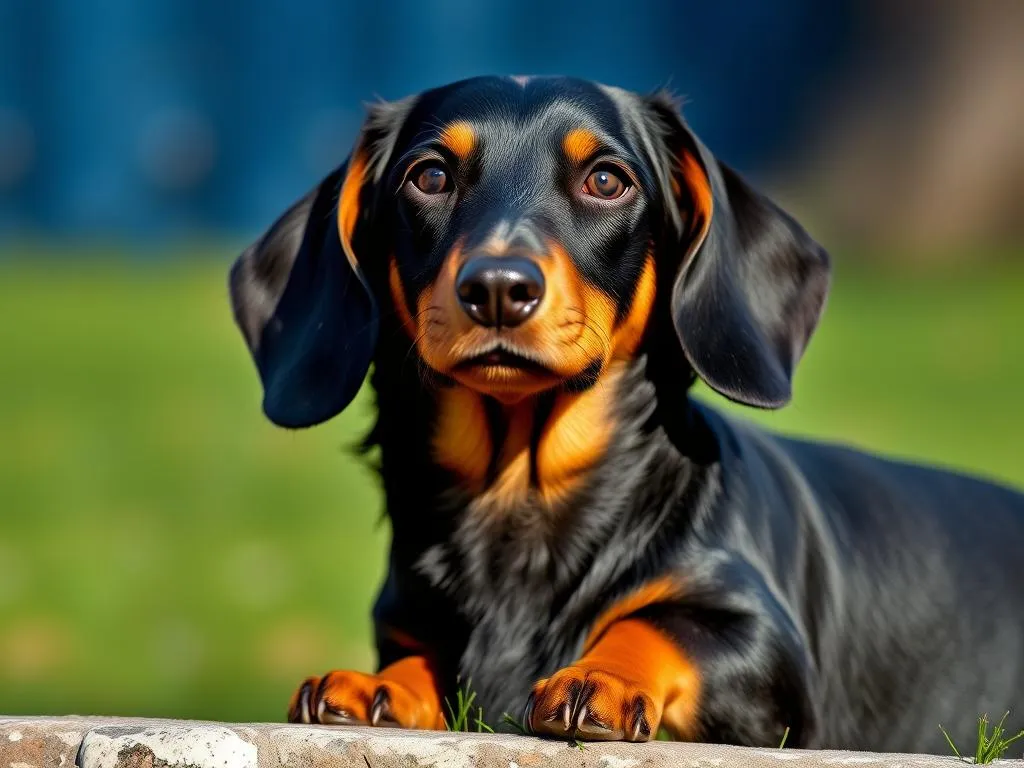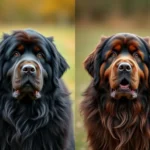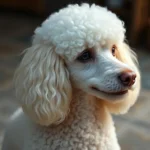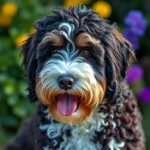
Introduction
Dog breeds are distinct categories within the canine family, each characterized by specific traits, behaviors, and physical attributes. Understanding these characteristics is essential for potential dog owners, as it helps in selecting a breed that fits their lifestyle and preferences. One such breed that stands out for its unique traits is the black and tan dachshund.
The black and tan dachshund is a beautiful variation of the standard dachshund, known for its striking color and charming personality. This article delves into the history, physical characteristics, temperament, care requirements, training, and the overall experience of living with a black and tan dachshund.
History of the Dachshund
Origins of the Dachshund
The dachshund originated in Germany, with historical references dating back to the 15th century. Initially bred for hunting, these dogs were specifically designed to pursue badgers and other burrowing animals. Their long bodies and short legs allowed them to dig into dens and chase their prey effectively. The name “dachshund” itself translates to “badger dog” in German, highlighting their purpose.
Development of the Black and Tan Variation
As the dachshund breed evolved, so did the range of color patterns available. The black and tan dachshund emerged as a popular variation because of its striking appearance. Breeders selectively paired dogs to enhance the black and tan coloration, which features a rich black coat complemented by tan markings on the face, legs, and chest. This distinctive coloring not only appeals visually but also showcases the breed’s versatility and charm.
Physical Characteristics
General Appearance
The black and tan dachshund maintains the classic silhouette of the breed. Typically, they are small dogs, weighing between 16 to 32 pounds, depending on whether they are standard or miniature. Dachshunds have a long, elongated body with a deep chest, short legs, and a tapered muzzle. This build is essential for their original function as hunting dogs.
Dachshunds come in three coat types: smooth, long-haired, and wire-haired. Each type has its own unique texture and grooming needs:
- Smooth: Short, shiny coat that requires minimal grooming.
- Long-haired: Soft, flowing coat that may require regular brushing to prevent tangles.
- Wire-haired: Coarse, wiry coat that needs occasional grooming to maintain its texture.
Specific Traits of the Black and Tan Dachshund
The black and tan dachshund is easily recognizable due to its striking coloration. The glossy black coat is contrasted by rich tan accents, which can vary in intensity. This combination not only makes them visually appealing but also highlights their playful and lively personality. In terms of physical traits, the black and tan dachshund does not differ significantly from other dachshund variations, but their coat often draws attention and admiration.
Temperament and Behavior
General Temperament of Dachshunds
Dachshunds are known for their spirited demeanor. They are loyal, playful, and intelligent, making them excellent companions. Despite their small size, they possess a bold personality and often exhibit a strong hunting instinct. They have a reputation for being curious and can be quite mischievous, so consistent training and supervision are essential.
Traits Specific to Black and Tan Dachshunds
The temperament of the black and tan dachshund aligns closely with that of other dachshunds. However, some owners claim that the black and tan variation may exhibit a slightly more affectionate nature, possibly due to their striking appearance that often attracts more attention. While individual personality can vary, generally, they are friendly and enjoy being part of family activities.
Care Requirements
Nutrition
Providing a balanced diet is crucial for maintaining the health of a black and tan dachshund. High-quality dog food that meets their nutritional needs should be chosen, with considerations for their size and activity level. Generally, a diet rich in protein and low in fillers is recommended. Consult a veterinarian to determine the best diet plan tailored to your dog’s specific needs, including any health considerations.
Exercise Needs
Despite their small stature, black and tan dachshunds require regular exercise to stay healthy and happy. Daily walks, playtime in the yard, and interactive games are excellent ways to keep them engaged. Aim for at least 30 minutes of moderate exercise each day to prevent obesity and maintain a healthy weight.
Grooming
Grooming needs vary based on the coat type of the black and tan dachshund:
- Smooth: Requires minimal grooming; a weekly brush will help remove loose hair.
- Long-haired: Needs more frequent brushing to prevent matting, ideally every few days.
- Wire-haired: Requires occasional hand-stripping to maintain coat texture.
Regardless of coat type, regular nail trimming and dental care are essential.
Health Considerations
Dachshunds are prone to certain health issues, particularly intervertebral disc disease (IVDD) due to their long spine. Regular veterinary check-ups can help monitor their health and catch any potential issues early. Maintaining a healthy weight through diet and exercise is critical to reducing the risk of health problems.
Training and Socialization
Basic Training Techniques
Training a black and tan dachshund can be a rewarding yet challenging endeavor. Positive reinforcement methods, such as treats and praise, work best. Start with basic commands like “sit,” “stay,” and “come.” Early training is crucial, as dachshunds can be stubborn. Consistency and patience are key to successfully teaching them obedience and manners.
Socialization Practices
Socializing a black and tan dachshund is vital to their development. Expose them to various environments, people, and other pets from a young age. This practice helps reduce anxiety and aggression in unfamiliar situations. Arrange playdates with other dogs and take them to pet-friendly locations to enhance their social skills.
Living with a Black and Tan Dachshund
Ideal Living Environment
Black and tan dachshunds adapt well to various living environments, whether it’s an apartment or a house with a yard. However, they do require space to move around and play. If you live in an apartment, regular walks and playtime will ensure they get enough exercise. They are also great companions for families with children, provided that interactions are supervised.
Lifespan and Aging
The average lifespan of a dachshund is around 12 to 16 years, although many live into their late teens with proper care. As they age, they may experience mobility issues, so consider adapting their exercise routine and providing comfortable bedding. Regular vet visits are essential to monitor their health and address any concerns related to aging.
Conclusion
Owning a black and tan dachshund can be a delightful experience, filled with companionship and joy. With their unique color, charming personality, and loving nature, they make excellent pets for various households. Understanding their history, care requirements, and training needs is essential for ensuring that they thrive in your home. If you’re considering adding a black and tan dachshund to your family, know that you will gain a loyal friend who brings warmth and happiness to your life.









